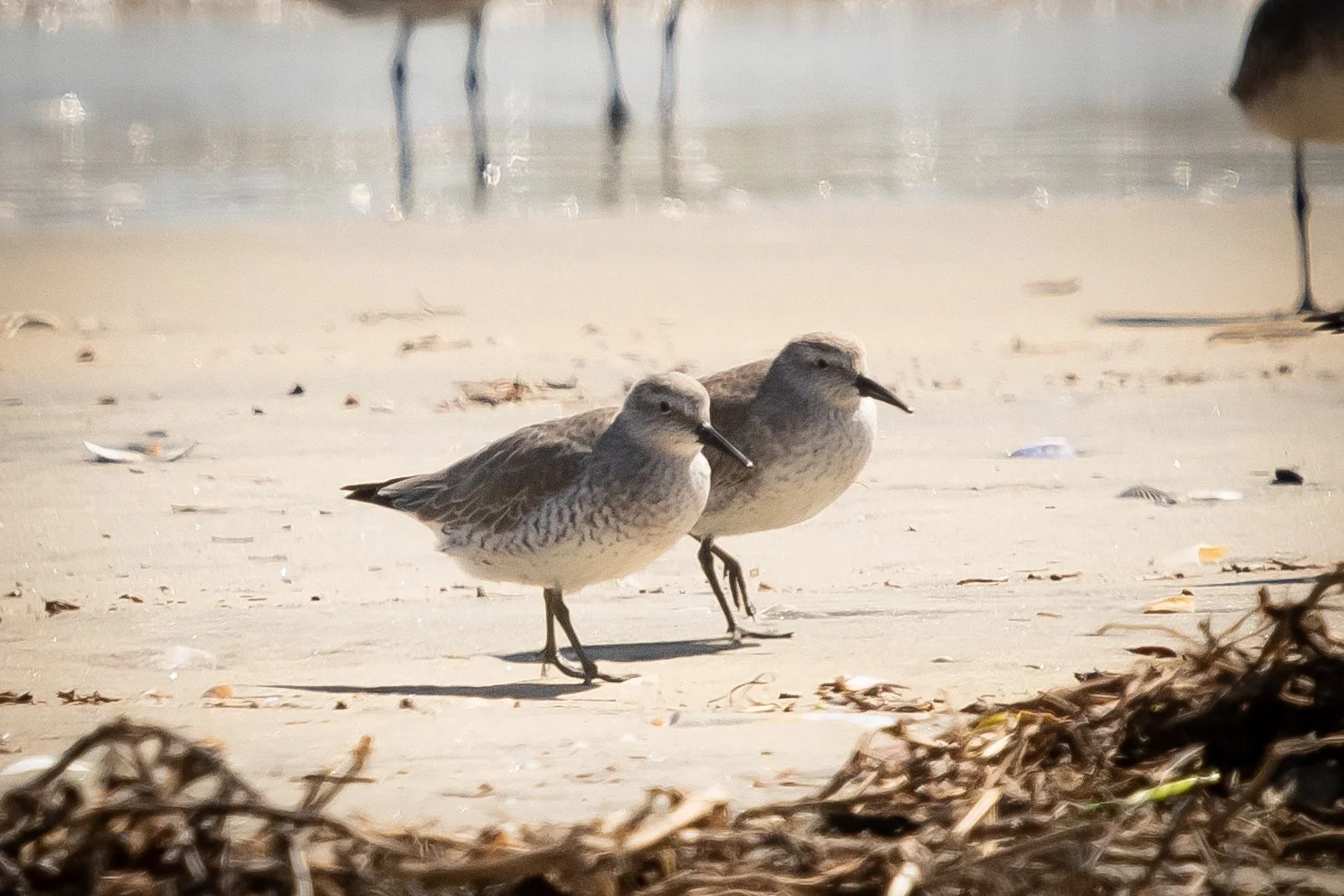Red Knot
Red Knot (Caladris canutus)
In celebration of World Shorebirds Day and this month's spotlight on shorebird conservation, the Red Knot stands out as a fitting choice for Species of the Month. Known for undertaking one of the longest migratory journeys of any bird, this remarkable traveler embodies the resilience and adaptability that define shorebirds worldwide.
Photo Credit: Laura Ibarra
Epic Journeys
Each year, Red Knots undertake one of the most extraordinary migrations in the animal kingdom. Some individuals travel over 9,000 miles (14,000 km) from the Arctic to the southern tip of South America—and then make the return journey.
Among the six recognized subspecies of Red Knot, migration routes and wintering grounds remain partially unknown, adding an element of mystery to their epic travels. The subspecies Calidris canutus rufa is known for covering the greatest distance, with a migratory path stretching up to 15,000 km across the Western Hemisphere. The subspecies that we can find at Punta Banda Estuary this time of year, Calidris canutus roselaari, relies heavily on Baja California’s coastal wetlands as a vital stopover and wintering site. These birds breed in Alaska and on Wrangel Island in Russia, then follow the Pacific Flyway southward to spend the winter along the Pacific Coast of northern Mexico.
Feeding Strategies - From “Hunt’n’Peck” to ESP
Red Knots exhibit remarkable seasonal flexibility in both behavior and physiology, adapting their feeding strategies and internal anatomy to suit vastly different environments. On their Arctic breeding grounds, they find their prey by sight (as we would), and peck at spiders, insects, and bits of plant material scattered across the tundra. This visual hunting method is well-suited to the open, sunlit landscapes of the north, where prey is often exposed and mobile. Their diet during this time is relatively soft and easy to digest, requiring minimal mechanical processing.
As the seasons shift and Red Knots migrate to coastal wintering grounds, their feeding strategy undergoes a dramatic transformation. Instead of relying on sight, they begin to forage by touch, pacing along seashores and mudflats while probing into wet sand and mud for hidden prey. This prey—primarily hard-shelled mollusks and small crabs—is buried beneath the surface, invisible to the eye. To locate it, red knots use specialized sensory structures called “bill tip organs”, located in their upper jaws. The bill tip organs are packed with “Herbst corpuscles.” Herbst corpuscles are specialized nerve cells that enable Red Knots and other sandpiper species to detect subtle vibrations and pressure changes in the mud or sand, allowing the bird to sense prey without direct contact—a phenomenon known as “remote touch.” As it’s outside the realm of human perception, this phenomenon is, indeed, a form of extrasensory perception.
Superpower Stomachs and Migratory Shape Shifting
Like many bird species (including chickens), Red Knots have a muscular stomach called a “gizzard” that helps to grind up food. During the wintering and migratory season, the muscular stomachs of Red Knots grow bigger (by up to 147% within just 6 days!) so they can swallow whole the clams, crabs, and other tough-shelled prey, and the giant gizzard pulverizes those tough shells. Then before embarking on long migratory flight back to their breeding grounds, the gizzard shrinks and the flight muscles in their chest grow, optimizing their bodies for endurance and efficiency in the air. This trade-off between digestive capacity and flight performance reflects the intricate coordination between behavior, anatomy, and environment, enabling Red Knots to thrive across ecosystems with vastly different food sources. It’s a physiological balancing act—when the diet demands more mechanical digestion, the gizzard grows; when it doesn’t and long flights are needed, the organ shrinks to conserve energy and the flight muscles grow.
Status and Threats
The Pacific subspecies of the red knot that we see in Punta Banda (Calidris canutus roselaari) is listed as threatened in Mexico. Red Knots face threats from habitat loss, reduced prey availability, and climate change-related mismatches in food and weather conditions. Higher latitudes and coastal areas where Red Knots are most affected by climate change. Sea level rise, coastal erosion, and general warming temperatures destroy the ideal habitats for the Red Knot. As arctic breeding grounds continue to warm, Red Knot body size has decreased, and the survival rate has diminished for birds born in warmer years.
Explore and Learn
If you’re interested in seeing a Red Knot “in person” or want to explore other bird life in the Punta Banda area, email us at alconpb@gmail.com and ask to join the newly formed Punta Banda Birding Club! We will contact you about upcoming birdwatching events you might be interested in joining.
Photo Credit: Laura Ibarra


